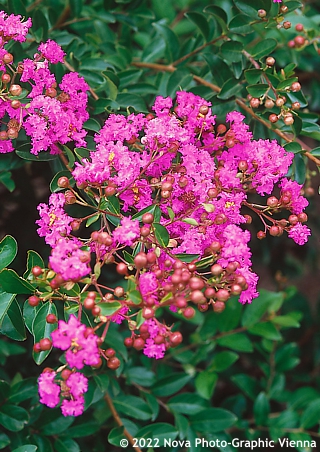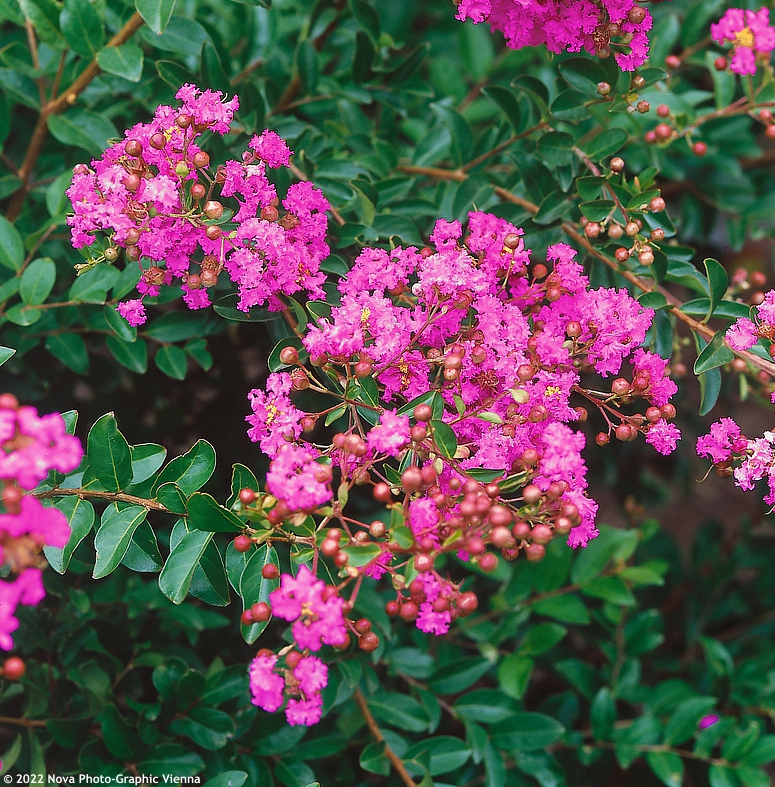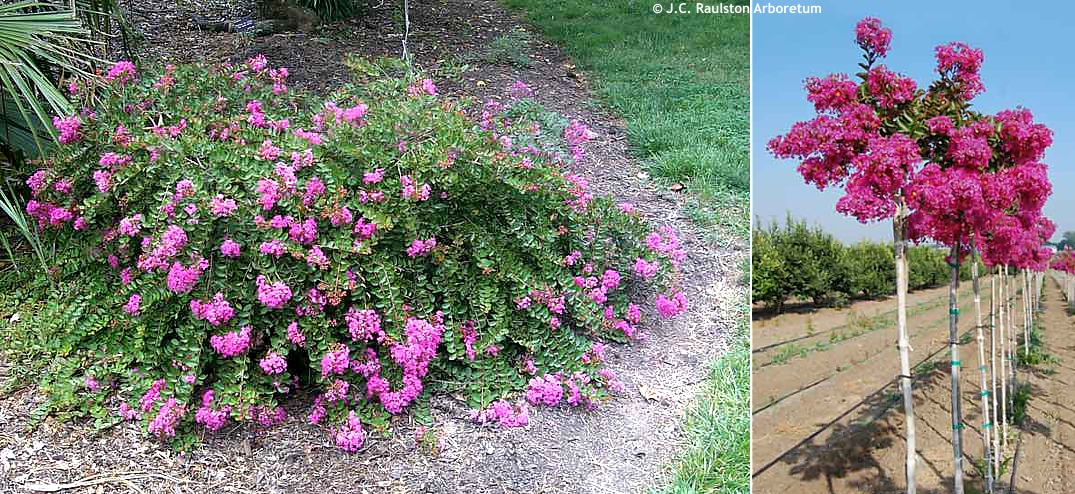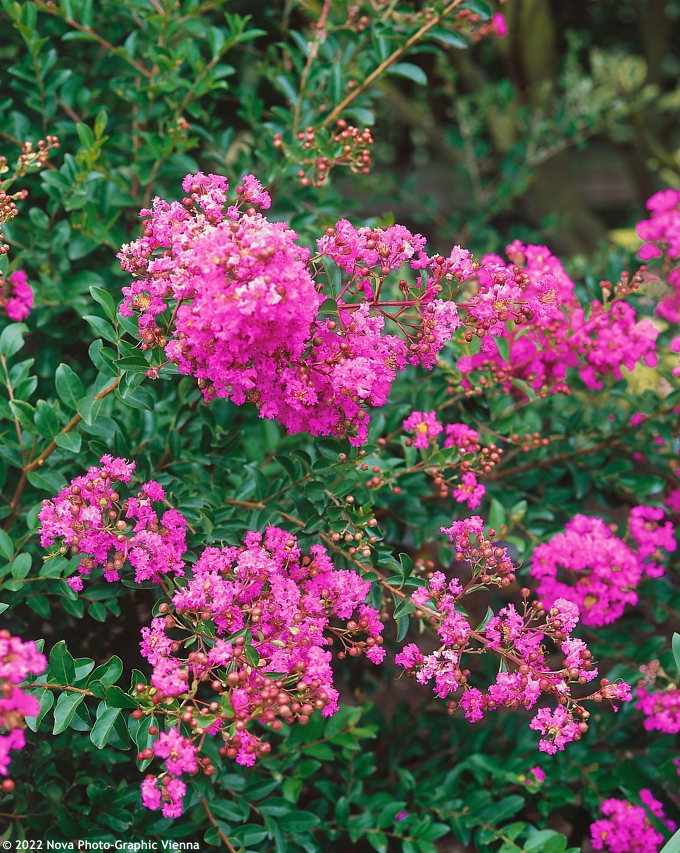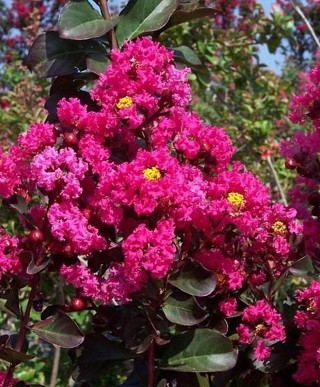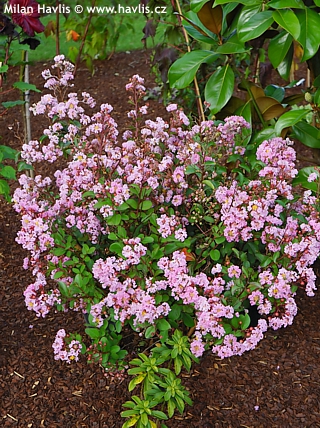Lagerstroemia 'WORLD'S FAIR' crepe myrtle


Lagerstroemia
Crape myrtle is a flowering shrub or small tree from China. It was first introduced to the USA and the UK in the 18th century. The original plant lagerstroemia indica is too tender and not too pretty so breeders were working on further hybridization and the most attractive varieties available now are believed to be results of crossing with l.speciosa and l.fauriei. Far more important news for us is the fact that among those finished plants were selected others that survived lower temperatures than what was common in the areas of natural habitat so we have a few myrtles that can grow even in our climate. Some were selections, other consequent hybrids.When leaves fall off, older plants reveal flaking-off bark just like plane trees or stewartias do, leaving a mosaic pattern on the smooth trunks. This happens on upright and taller growing varieties. Dwarf or compact ones don’t make much bark to show.
Crape myrtles need little care. They need full sun with zero shade during the day. Pruning will secure fresh growth and good flowering: cut back last year's growth to about a third of its original size. Do so in spring after danger of all frosts. The plant will make strong news shoots that will bear flowers. Grow it in well-drained soil that should be kept moist before it gets fully established. The soil should be very well-drained and fertile. It needs heavy mulching in winter and some mulch in summer to retain moisture. Overfertilizing will cause excessive growth but no flowers.
The woody framework of this variety above ground is hardy to about -21°C (USDA zone 6b), and roots may withstand down to -25°C if mulched. However, standard trees (with a single trunk and grafted canopy) are often grafted onto common indica species which is hardy to about -15°C only, therefore, despite good hardiness of the variety tree forms are suitable only to zones 7 and higher. Overall size of such tree is a sum of common variety size plus the size of the trunk (which does not grow much taller anymore, only increases its girth).
Last update: 16-08-2012; 02-02-2022
Goods are shipped all over Europe. For Russia and U.K. and for further details please read about SHIPPING OPTIONS HERE.
Are you interested in a serious discount for orders NOV-FEB? Check your options here.
THE PRICES INCLUDE VAT of 15%. For quick conversion you can use 1 CZK = approx. 0.04 EUR
- STANDARD QUALITY - Plants of this group are 1st class quality with number of branches and overall density adequate to their size and age, considering they were container grown.
- DE LUXE QUALITY - This label guarantees a luxurious quality of manually selected plants that, compared to their height and age, are exceptionally dense and beautiful.
- EXTRA - These plants are usually mature and bigger specimens with exceptional overall appearance.
- STANDARD (as described in the plant form) means a tree with a trunk of 190-210 cm and a crown at the top, unless specified differently. The commercial size for trees is their girth measured in the height of 1m from ground.
- HOBBY - These plants are of the same quality as our standard-quality plants but younger and therefore cheaper.
- SHRUB - a woody plant with branches growing bushy from the ground level.
- HALF-STANDARD or MINI-STANDARD - a small tree with shorter trunk, its size is usually specified.
- FEATHERED - These are trees with branches growing already from the base of the trunk and up along the stem.
- GRASSES and PERENNIALS - Sizes given usually read the diameter of the pot or the clump, as specified.












